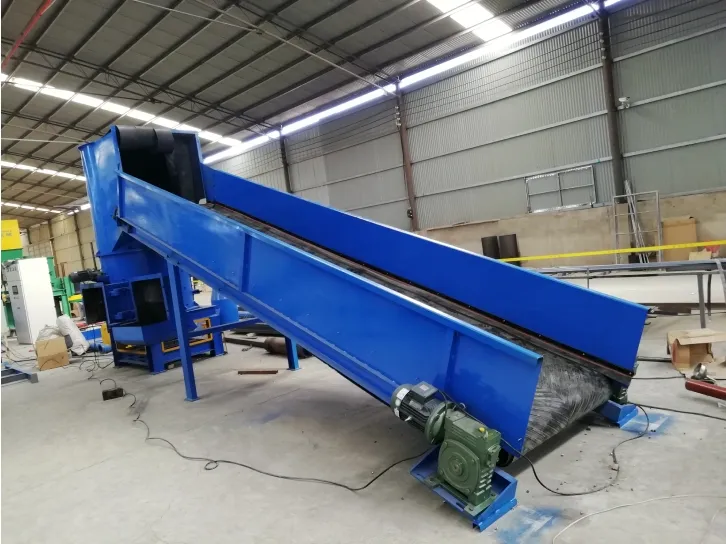

Jul . 26, 2024 09:59 Back to list
Eddy Current Non-Ferrous Separator An Overview
The management of waste materials and recycling has become a crucial aspect of environmental sustainability. Among the diverse technologies employed to enhance recovery processes, the Eddy Current Non-Ferrous Separator (ECNS) stands out as an innovative solution for sorting non-ferrous metals from mixed waste streams. This technology harnesses the principles of electromagnetism to efficiently separate materials such as aluminum, copper, and other non-ferrous metals, making it a vital asset in recycling facilities and industries involved in metal recovery.
Principle of Operation
The Eddy Current Separator operates on the principle of eddy currents, which are loops of electrical current induced within conductors by a changing magnetic field. When non-ferrous metals pass through a rotating magnetic field generated by the separator, these metals become energized and produce their own magnetic fields. The strength and direction of the induced eddy currents vary depending on the type, size, and conductivity of the metal, allowing the separator to differentiate between non-ferrous metals and other materials.
The process starts with shredded materials being fed onto a conveyor belt that leads them through the separator. As the materials move past the rotating permanent magnet, the non-ferrous metals experience a repulsion force due to the induced eddy currents. This causes them to be ejected from the material stream, allowing for effective separation from ferrous and non-metallic materials such as plastics, wood, or glass.
Advantages of Eddy Current Separators
The ECNS offers several advantages over traditional separation methods. Firstly, it enhances the efficiency of metal recovery by capturing non-ferrous metals that other methods may miss. Its ability to provide a high purity level of recovered metals makes it an attractive option for recycling operations aiming for quality output.

Secondly, eddy current separators have a low operational cost. Since they do not rely on any consumable resources like water or chemicals, businesses can lower their environmental impact and operational expenses simultaneously. Furthermore, the technology is maintainable and has a long lifespan, making it a sound investment for recycling facilities.
Moreover, the ECNS can process a wide variety of materials. From e-waste containing copper and aluminum parts to shredded automobile scrap, the versatility of this technology makes it ideal across various industries. As global demands for recycled metals rise, the importance of efficient and effective separation solutions will continue to grow.
Applications and Future Trends
Eddy Current Separators are widely used in several industries, including waste management, automotive recycling, and electronic waste recovery. With the increasing trend toward circular economies, where waste is minimized and materials are continuously reused, the role of ECNS will likely expand. Innovations in this field may include advancements in sensor technology and automated sorting systems, improving the efficiency and accuracy of metal recovery processes even further.
Additionally, as regulations around waste management become stricter, industries will need to adopt more efficient separation technologies to comply with environmental standards. This presents an opportunity for businesses that utilize Eddy Current Non-Ferrous Separators to lead the way in sustainable practices.
Conclusion
In conclusion, the Eddy Current Non-Ferrous Separator represents a pivotal technology in the quest for enhanced recycling and waste management solutions. By effectively separating non-ferrous metals from various waste streams, it not only promotes resource recovery but also contributes to the overall sustainability goals of industries worldwide. As technological advancements continue to emerge, the future of eddy current separation looks promising, paving the way for efficient and eco-friendly waste management practices.
Latest news
The Future of Metal Recycling: Revolutionizing Waste Management
NewsMay.14,2025
Optimizing Waste with Recycling Lines
NewsMay.14,2025
Municipal Solid Waste Sorting Line: Revolutionizing Waste Management
NewsMay.14,2025
Metal Shredders: Essential Tools for Efficient Recycling
NewsMay.14,2025
Maximize Your Profits with a Copper Wire Granulator
NewsMay.14,2025
Home Metal Shredder: A Smart Choice for Your Home Recycling Needs
NewsMay.14,2025